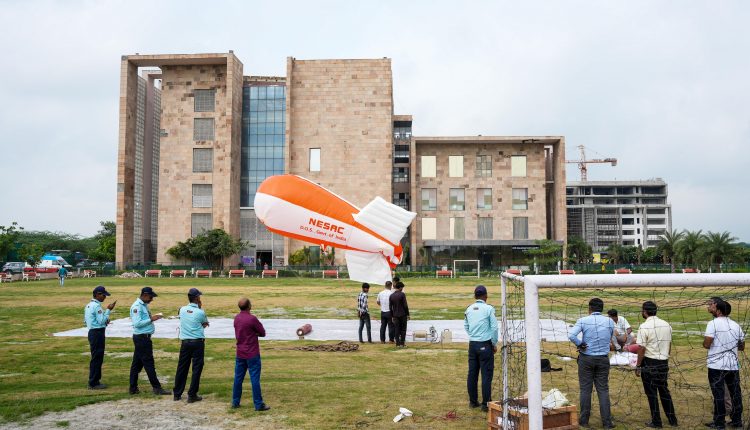CSIR-NPL, Galgotias University Collaborate to Study Delhi-NCR Pollution Using Balloon and Drone Technology
TEN NEWS NETWORK
New Delhi, September 2024 – In a cutting-edge initiative, the CSIR-National Physical Laboratory (NPL) has embarked on a crucial study to understand pollution episodes in Delhi-NCR. The study, conducted in collaboration with leading institutions such as the Tata Institute of Fundamental Research (TIFR), the North Eastern Space Applications Centre (NESAC), and the CSIR-National Aerospace Laboratories (NAL), aims to provide insights into the formation of air pollution and haze over the region’s atmospheric boundary layer.
The experiment will involve in-situ observations of particulate matter and meteorological parameters at varying altitudes using a tethered balloon (Kytoon) and a drone platform. These observations will take place during both low-pollution conditions, set as a reference in late September, and high-pollution conditions expected in mid-October. The study’s goal is to better understand the physicochemical characteristics of particles and their variation with altitude, which could help pinpoint the mechanisms behind haze formation in Delhi-NCR’s atmosphere.
To achieve this, the researchers will conduct concurrent experiments across three strategic locations: Maharshi Dayanand University in Rohtak, Haryana; Galgotias University in Greater Noida, Uttar Pradesh; and the CSIR-NPL campus in New Delhi.
Planned Experiment Sites:
- Maharshi Dayanand University (Rohtak, Haryana)
- Galgotias University (Greater Noida, Uttar Pradesh)
- CSIR-NPL (New Delhi)
Experiment Time Plan:
- 25-30 September 2024: Background atmospheric conditions will be observed.
- 18-28 October 2024: Measurements during pollution formation conditions.
The tethered balloon will carry an array of instruments to measure particulate matter and volatile organic compounds, as well as microbial culture plates to monitor biological particulates. The balloon’s payload will include:
- Low-volume particulate matter sampler
- Volatile organic compounds sampler
- Microbial culture plates
- Radiosonde for meteorological data
These experiments are expected to provide valuable data to reduce the uncertainties in regional climate change assessments, assist in developing remedial strategies to reduce haze episodes, and shed light on the health impacts of pollution.
This comprehensive study aims to deepen our understanding of Delhi-NCR’s persistent air quality issues and contribute to more effective pollution control measures in the future.


